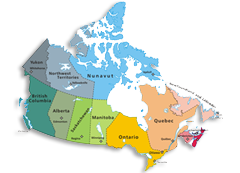Northers Lights
Aurora Borealis watching

5 Rue Du Pont, Bertrand, NB E1W 0E1, Canada
The capital of Canada’s Northwest Territories, Yellowknife, is located directly under the ‘Aurora Oval’, a narrow band encircling the polar reaches of the globe in which the mysterious coloured lights of the aurora borealis are at their most brilliant. Coupled with its clear nights, this favorable geographic location makes Yellowknife consistently one of the best places in the world for aurora viewing.
On winter nights in the Northwest Territories, the Aurora Borealis is often so vivid it seems close enough to touch. Far from city lights, stand on a frozen lake and watch the night sky light up. When the aurora is overhead, as it is in the Northwest Territories, you can almost feel the lights wrap ghostly fingers around you. Choose the steamy heat of an outdoor hot tub at a wilderness lodge to see the aurora. It's a wonderful winter vacation option.
Guests can experience massive curtains of light that flash dramatically across the night sky, swirling and twisting into magnificent coronas. The aurora borealis, or northern lights, are actually giant electrical storms formed by solar flares from the sun that react with the Earth’s magnetic field. Although they are usually about 100-500 kilometers above the Earth’s upper atmosphere, in Canada’s North, our guests often feel that they can reach up and touch these spectacular light displays!
What is the Aurora?
The sun gives off high-energy charged particles (also called ions) that travel out into space at speeds of 300 to 1200 kilometres per second. A cloud of such particles is called a plasma. The stream of plasma coming from the sun is known as the solar wind. As the solar wind interacts with the edge of the earth's magnetic field, some of the particles are trapped by it and they follow the lines of magnetic force down into the ionosphere (the section of the earth's atmosphere that extends from about 60 to 600 kilometres above the earth's surface, where the Lights are visible). When the particles collide with the gases in the ionosphere they start to glow, producing the spectacle that we know as the auroras.The array of colours consists of red, green, blue and violet. The most common Colour is a ghostly green, given off by oxygen atoms. Oxygen is also responsible for the brownish red colour. Auroras that are very intense, often have purple edges, that are caused by a red and blue mixture of nitrogen emissions. The Northern Lights are constantly in motion because of the changing interaction between the solar wind and the earth's magnetic field.
It is not possible to preduct auroral activity in advance, but if the weather is clear, chances are pretty good that you will see Aurora Borealis in the Northwest Territories between September and Early April, but is at its most vivid from December to March when the nights are the longest,and the sky its very darkest.
The lights of the Aurora generally extend from 80 kilometres (50 miles) to as high as 640 kilometres (400 miles) above the earth's surface.
Winter temperatures can reach -30 or -40 degrees Celsius, but usually average in the -15 to -25 degrees Celsius range. The coldest and shortest days are in December and January.
Weather : Winter temperatures can reach -30 or -40 degrees Celsius, but usually average in the -15 to -25 degrees Celsius range. The coldest and shortest days are in December and January.
Guided activities such as dogsledding, snowmobiling and air tours are available.













